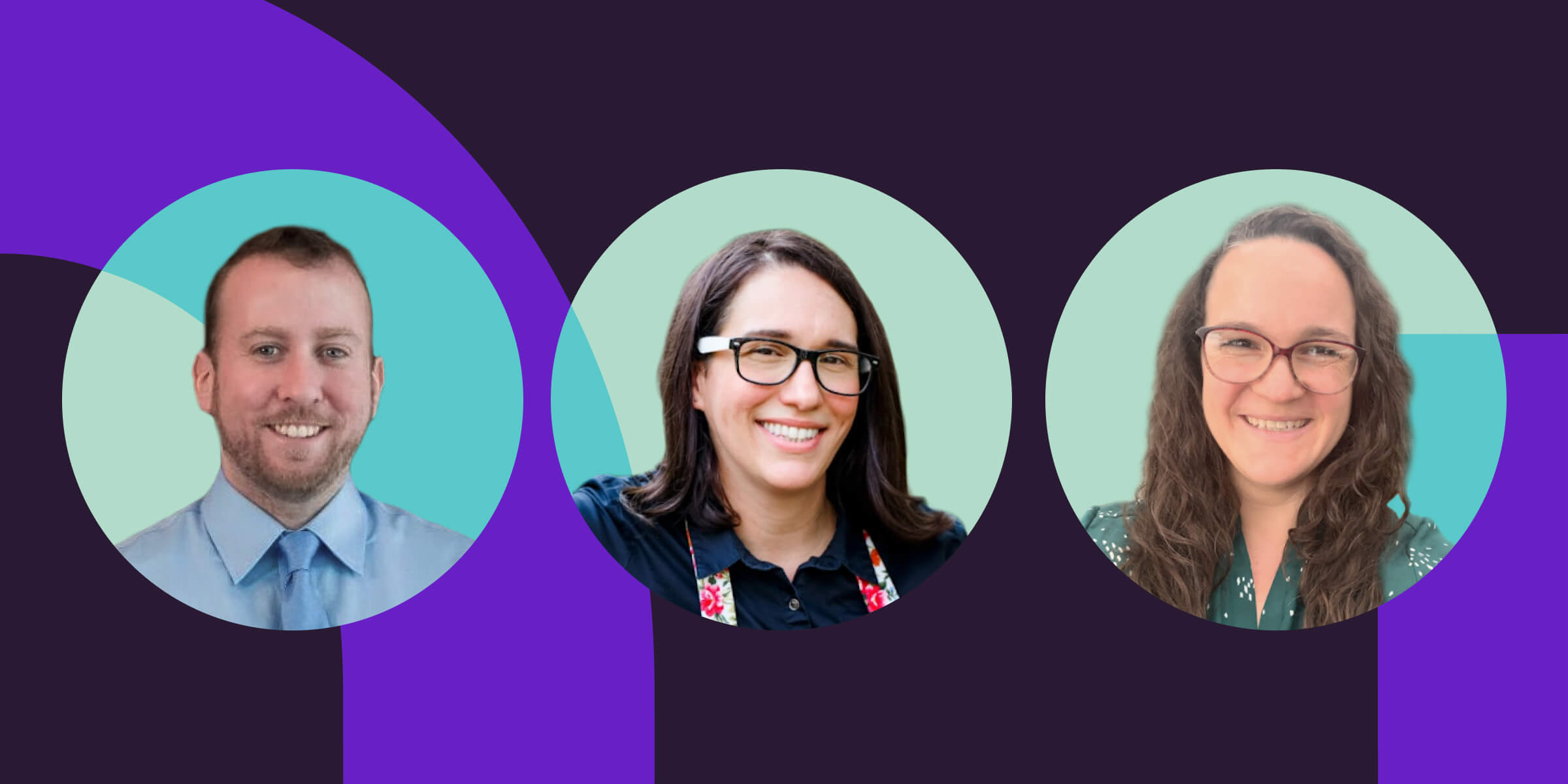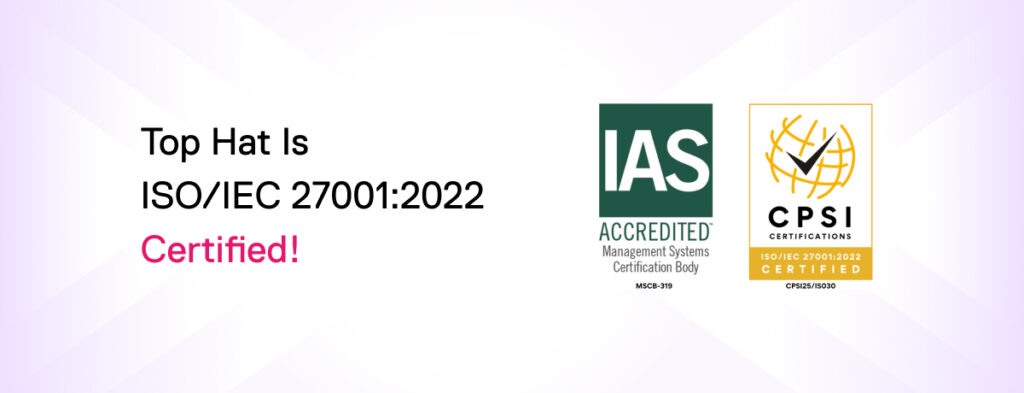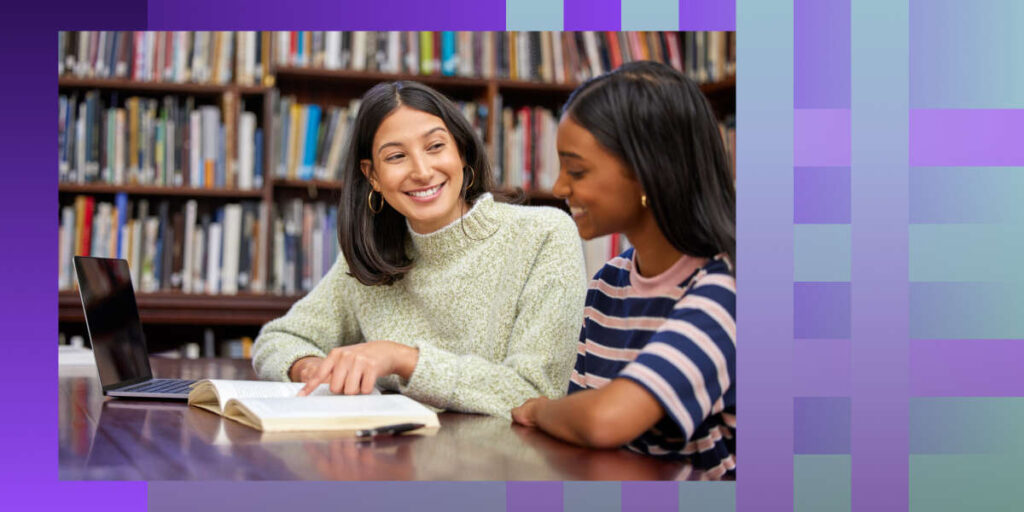To say that professors were challenged over the past two years would be an understatement. Teaching modality shifts. New health and safety protocols. Engagement challenges with students spread across the globe. These are just a few of the many factors that have added to the stress of being an educator in today’s world.
At our annual Top Hat Engage user conference, we celebrate the incredible role post-secondary educators play in and out of their classrooms. We received countless submissions this year from faculty nationwide—but three professors, in particular, went the extra mile to promote a sense of engagement, belonging and value among their students. Below, we share your 2022 Top Hat Educator Award recipients and their stories.
What are the Top Hat Educator Awards?
The Top Hat Educator Awards are presented annually at our Top Hat Engage user conference, which brings together hundreds of higher ed faculty for interactive, educator-centric programming. We honor three educators who use Top Hat in novel ways to improve the learning experience for students before, during and after class. Read more about each award below.
| Most Innovative Educator Award | Student Impact Award | Top Author Award |
|---|---|---|
| Awarded to the professor whose boundary-pushing use of Top Hat has created a better, more engaging learning experience for students before, during and after class—even during the height of the pandemic. | Awarded to a member of the Top Hat community who excels at connecting and collaborating with students. This individual has fostered a vibrant and inclusive learning community in and out of class to improve learner outcomes. | Awarded to the professor who uses Top Hat’s authoring tools to make learning timely and relevant through real-world examples and scenarios. Their use of multimedia helps bring a sense of immediacy to learning, improving student engagement in and out of class. |
Most Innovative Educator Award
A more innovative professor makes for a more innovative classroom. Top Hat was privileged to announce three finalists for this award: Christine Burton at the University of Toronto, Amanda Haage at the University of North Dakota and Lindsay Tan at Auburn University, the winner of this prestigious award.
Tan was nominated by several of her colleagues at Auburn including Taneshia Albert, Assistant Professor of Interior Design, who wrote “she consistently uses tools to make her classroom more equitable and engaging for everyone, no matter their location or abilities.” Albert went on to describe Tan not just as an educator to students, but to faculty as well: “She teaches these tools to other faculty members so they, too, can be successful against all odds.”
Tan was honored for her ability to optimize her online learning environment in a way that allows for greater flexibility, equity and empathy than in the pre-pandemic classroom. An author of a dynamic Top Hat title, Introduction to Interior Design, Tan fully embodies her approach to course design: “keep content hard but make learning easy.” Her extensive use of Top Hat has empowered her to reduce accessibility and financial barriers, much to the delight of her students. “The pandemic highlighted existing injustices in our system. Addressing this doesn’t mean lowering the bar, but keeping the bar where it is and building flexibility into your course,” she says. Her students have also overwhelmingly approved of her teaching philosophy, as you’ll hear more about in the video below.
Student Impact Award
At its core, a student-centered mindset allows for additional equity and connection in and out of class. There were three awe-inspiring professors selected as finalists for this award: John Wiginton at the University of Mississippi, Ricardo Nogueira at Georgia State University and Elizabeth Sargent at Georgia Southern University, the winner of this year’s Student Impact Award.
Sargent was nominated by several of her students who commented on the steps she took to prioritize learner success in her course. Here’s what Rhea Patel, a student at Georgia Southern, had to say: “She changed my life in ways that she probably doesn’t know. Dr. Sargent truly takes the time out of her day to give feedback and will change her lesson plans based on her students’ needs.”
We’re celebrating Sargent’s efforts to get to know her students and to invest in their academic—and non-academic—success. Using community-building and flexibility as pillars of her course has ultimately led to more curious, engaged and active students. When asked about her recipe for student success, she said: “Students are responsible for their own learning, but they’re not on their own. I learn students’ names early on, which not only surprises them, but helps them recognize that they’re a person and not just a number on a page.”
Hear more about the role Professor Sargent has played in reducing barriers to learning and maintaining a sense of belonging.
Top Author Award
Using dynamic courseware, rich with media, assessments and discussion questions, is a key way to meet the needs of Generation Z in the classroom. Faculty who have created transformative custom course materials were selected as finalists for this award: Tamarah Adair, Amanda Bracey and Mindy Syharat at Baylor University, Jennifer Donovan at Arizona State University and Derek Weber at Raritan Valley Community College, the winner of this year’s Top Author Award.
Frustrated with the lack of support for digital lab materials, Weber chose to author his own manual in Top Hat, packed with simulations, discussions and poll questions. Since then, he’s noted unseen levels of student engagement and application—both in and out of the lab. Weber’s students have really embraced this practical approach to learning. “I’m in the nursing program and so being able to work with patients in the clinical setting and apply everything I learned from his lab makes me feel like I have an edge,” shares student Malik Hooks.
Weber, along with several faculty who have adopted his lab manual, have swapped static learning materials for ones that are as dynamic as today’s students. With that has come greater control over keeping learning fresh, interactive and engaging. “My lecture has been transformed by the manual. Grades have improved with case-based assessments and exams have, in fact, gotten harder but students are keeping up—and I think that’s been a wonderful outcome,” he shares.
Discover the role that Professor Weber’s lab manual Focusing on Health: Laboratory Exercises in Microbiology has played in connecting course material to the real world.
Congratulations to this year’s Top Hat Educator Award finalists and recipients. These three inspiring individuals are figures whom we can turn to and learn from as higher ed slowly settles into the next normal.
→ Get Dr. Chris Emdin’s tips on authentic and vulnerable teaching [Webinar on Demand]


